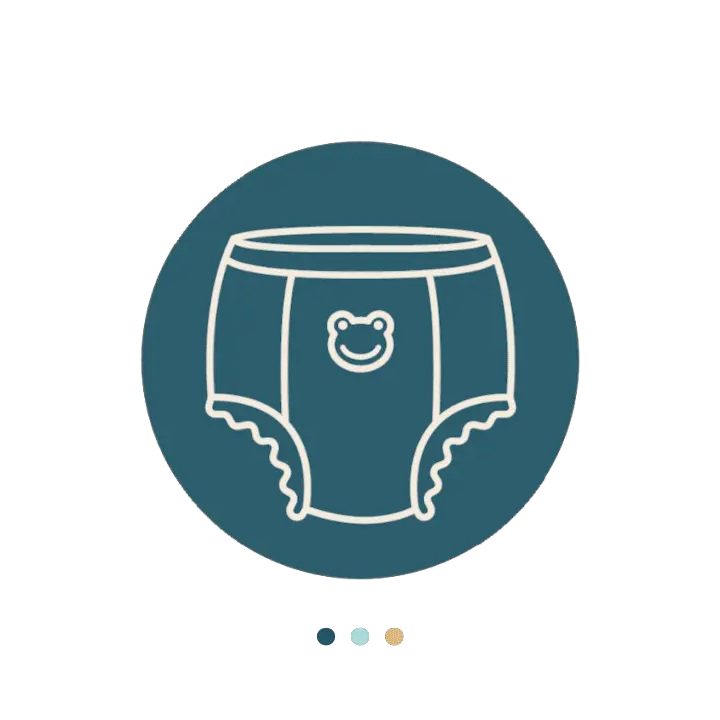After the holiday season, many people put their New Year’s resolutions into action, and a common one is to get healtheir, whether that’s by exercising more or eating a balanced diet.
If you experience bladder leaks, also known as urinary incontinence (UI), a great resolution for this year may be to strengthen your pelvic floor muscles to reduce symptoms like bladder leaks. And, if you’re someone who doesn’t have UI, keeping your pelvic floor healthy is a smart way to prevent it from occurring.
Read this article to learn what you should be doing to keep your pelvic muscles healthy and strong in the new year!
What Is Your Pelvic Floor & Why Is It Important?
Your pelvic floor is group of muscles that control a number of functions:
- Urination
- Bowel movements.
- Sexual function.
The pelvic floor is like a hammock. In females, the pelvic floor muscles attach to the pubic bone, wraps to the urethra, vagina, rectum, and tailbone. The muscles spread to the sides of the hips and attach to the pelvis, abductor, and adductor muscles.
Check Your Eligibility
2 Easy Steps
Discover the continence care essentials available through your Medicaid plan.
In males, the muscles attach to the pubic bone, tailbone, sacrum, abductor, adductor muscles, and sitting bones. In both males and females, these muscles support the bladder and bowels and hold the pelvic organs in place.
If your pelvic floor is weakened, you could experience a pelvic organ prolapse (POP) or pelvic floor dysfunction.
Factors that lead to issues with the pelvic floor include:
- Childbirth
- Menopause
- Lack of exercise.
- Increased types of certain exercises that damage the pelvic floor.
Your pelvic floor muscles can also cause issues when they are too tight.
Pelvic floor disorders that you may experience with a weakened or tightened pelvic floor include:
- UI, such as overactive bladder (OAB) or stress incontinence, or urinary urgency.
- Bowel incontinence.
- Constipation due to poor bowel control.
- Lower back pain.
- Pain in the pelvic area.
- Increased pain or pressure on the genitals.
- Painful intercourse (female).
While many people recognize that pelvic health is important for women’s health, it is commonly ignored when it comes to men’s health. The pelvic muscles play a critical role for both males and females, so use our New Year’s resolutions checklist to ensure yours stays healthy!
10 New Year's Resolutions for a Healthy Pelvic Floor
Add these resolutions to your wellness list this year to maintain your quality of life and keep your pelvic floor healthy!
1. Talk to Your Healthcare Provider
Your primary care provider should be able to give you information about taking care of your pelvic floor or suggesting treatment options for UI if you’re already experiencing things like leakage.
2. Try Pelvic Floor Physical Therapy
Find a pelvic floor physical therapist to increase your pelvic floor strength or to help relax the pelvic muscles. They can help you come up with a treatment plan for keeping your pelvic floor healthy.
3. Do Kegel Exercises
4. Get an Ergonomic Chair
It’s never too late to get yourself a holiday gift that will help improve your health! Look into ergonomic chairs that improve your posture to take pressure off your pelvic floor.
5. Hydrate!


Hydration keeps your pelvic floor and bladder healthy. It can also help if you’re experiencing UI symptoms by aiding in preventing urinary tract infections (UTIs) and making your urine less concentrated which irritates your bladder.
6. Stay Active
Did you know that sitting for too long can weaken your pelvic floor? That’s right! It’s important to stay active, whether that means going for a short walk during the day or heading to the gym. Exercise improves overall physical health and helps to prevent excess weight which can put pressure on your pelvic muscles.
7. Practice Proper Posture
The way you stand or sit can put pressure on your pelvic muscles and weaken or tighten them. Ensure that you’re mindful of sitting and standing with things in line and straight.
8. Wear Bladder Control Products for Leaks
If you experience bladder leakage, discreet supplies like bladder control pads or adult protective underwear will help you stay dry and comfortable.
You may even be able to get these products for free through insurance if you qualify with Aeroflow Urology! We navigate the confusing insurance paperwork for you and send your products for free every month in unmarked boxes. See if you qualify for our services in under 5 minutes by filling out our Eligibility Form!

9. Relax While Voiding
Chronically pushing while going to the bathroom- especially during bowel movements- can strain your pelvic floor muscles. Another piece of this is to prevent constipation by eating a healthy diet to keep things moving. Relax while voiding your bladder or bowels and give yourself enough time on the toilet.
10. Wear the Right Shoes
It may be hard to believe, but the shoes you wear can effect your pelvic floor. If you’re wearing a shoe that makes your heel higher than your toes while you’re standing, it’s going to cause your pelvic floor to contract and tighten due to your body not being aligned properly and your pelvis being pushed forward. Avoid shoes with a heel and aim for ones that have a flexible sole.
Information provided on the Aeroflow Urology blog is not intended as a substitute for medical advice or care from a healthcare professional. Aeroflow recommends consulting your healthcare provider if you are experiencing medical issues relating to incontinence.








